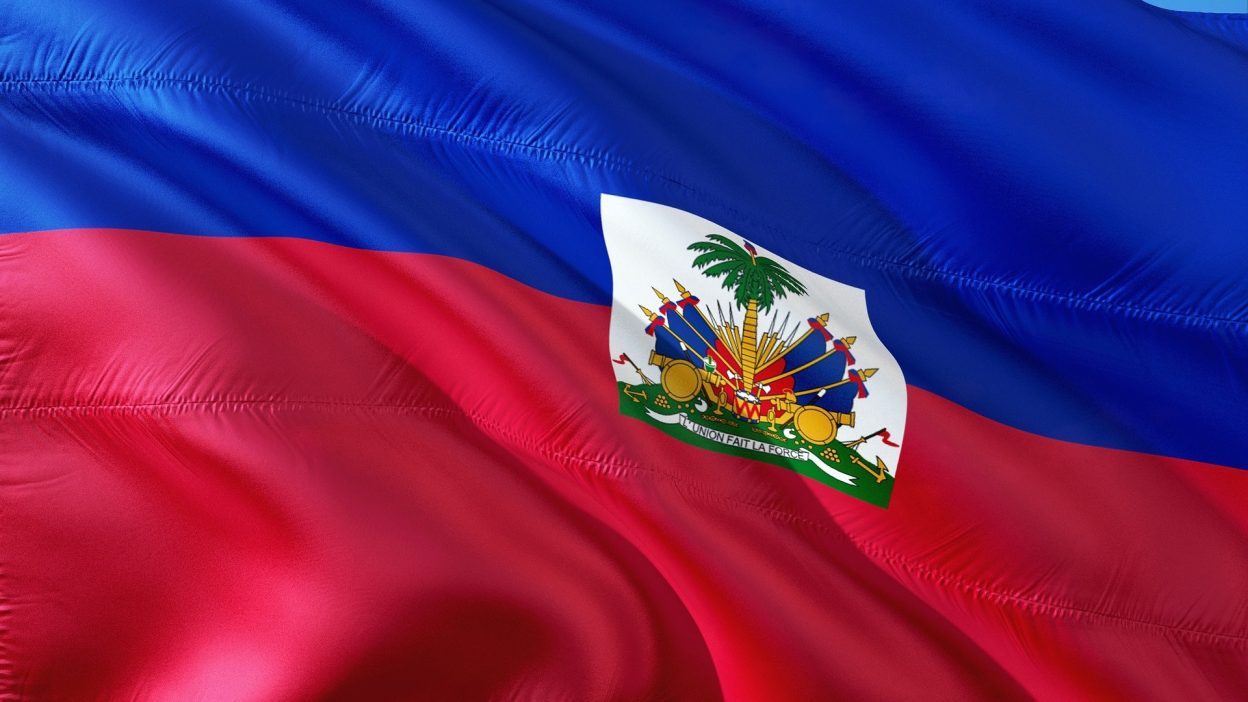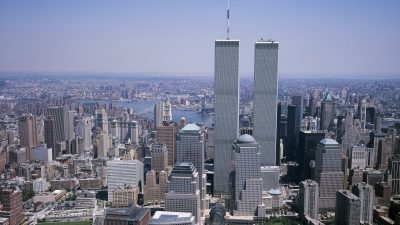Haiti in Ruins: The Devastation of the 2021 Earthquake
1. A Nation Brought to Its Knees: The Catastrophic 2021 Haiti Earthquake
On 14 August 2021, a powerful 7.2 magnitude earthquake struck Haiti, plunging the country into yet another humanitarian disaster. The violent tremors wreaked havoc across the southwestern region, flattening towns, destroying homes, and leaving tens of thousands of people trapped under rubble. In just a few moments, countless lives were lost, and entire communities were wiped off the map.
This disaster was eerily reminiscent of the 2010 earthquake, which had already left Haiti in ruins. The epicentre was near Petit-Trou-de-Nippes, and the shockwaves were so intense that they were felt across neighbouring countries. Making matters worse, Tropical Storm Grace arrived just days later, drenching the devastated regions with torrential rain and flooding, further complicating relief efforts. The Haitian people, already struggling with poverty, political instability, and weak infrastructure, found themselves facing yet another crisis that they were woefully unprepared for.
2. A Disaster That Was Bound to Happen: Why Haiti Was Defenceless
Haiti is no stranger to natural disasters. Situated in a highly active seismic zone, the country is prone to earthquakes, hurricanes, and floods. However, its vulnerability is not just due to geography but also decades of poor governance, corruption, and extreme poverty.
One of the primary reasons the 2021 earthquake was so destructive was the lack of earthquake-resistant infrastructure. More than 60% of Haitians live below the poverty line, which means most buildings, homes, and even hospitals are constructed with cheap, low-quality materials. The result? Entire structures collapsed within seconds when the ground began to shake.
The timing of the earthquake also exposed Haiti’s deep-rooted political instability. Just a month earlier, President Jovenel Moïse had been assassinated, leaving the government in turmoil. This created significant challenges for disaster response efforts, as authorities struggled to coordinate rescue operations and distribute aid.
Additionally, the epicentre of the quake was in a remote area, making it difficult for emergency responders to reach the affected regions. Roads were destroyed, hospitals were overwhelmed, and communication networks were severely damaged. Haiti was once again caught unprepared, highlighting the failure to learn from previous tragedies.
3. The Devastating Toll: Deaths, Injuries, and the Heartbreaking Statistics
- More than 2,200 people lost their lives: The earthquake claimed at least 2,248 lives, many of whom were crushed under collapsing buildings. The death toll might have been even higher had it not been for local volunteers and rescue teams pulling survivors from the rubble.
- Over 12,000 people were injured: Haiti’s already fragile healthcare system was quickly overwhelmed. Many injured survivors waited for days without medical treatment, leading to avoidable deaths.
- 137,000 homes either collapsed or suffered severe damage: Families were left homeless overnight, forced to sleep in the open or in makeshift shelters. The lack of proper housing led to increased risks of disease outbreaks.
- Infrastructure was crippled: The earthquake damaged roads, bridges, schools, and hospitals, cutting off entire communities from assistance. The lack of proper roads slowed down relief efforts, making it difficult to deliver aid.
- The economic losses exceeded $1.5 billion: A nation already struggling economically faced an even deeper crisis. Businesses were destroyed, agricultural lands were damaged, and thousands lost their livelihoods.
4. What Made the 2021 Haiti Earthquake So Destructive?
The sheer scale of destruction caused by the 2021 earthquake was not just the result of natural forces—it was made worse by human negligence and lack of preparedness.
One of the biggest factors was the shallow depth of the earthquake, which occurred just 10 kilometres below the Earth’s surface. This meant that the seismic waves were concentrated near the ground, intensifying the shaking. Structures built with weak materials stood no chance against the powerful tremors.
Haiti also sits on the Enriquillo-Plantain Garden Fault, a highly active tectonic fault line. Scientists had warned for years that another major earthquake was inevitable, yet little action was taken to reinforce infrastructure or improve emergency preparedness.
Additionally, many homes and buildings in Haiti are self-constructed, meaning they lack proper engineering and safety standards. This resulted in the collapse of entire communities when the earthquake struck. The absence of strict building regulations, combined with widespread poverty, meant that disaster was unavoidable.
5. A Nation Without Leadership: How Political Chaos Made Things Worse
In the weeks leading up to the earthquake, Haiti was already in turmoil due to the assassination of President Jovenel Moïse. The country was leaderless, and the government was barely functioning. When the disaster struck, the lack of a coordinated response became painfully clear.
Rescue efforts were slow and unorganised, and many survivors were left to fend for themselves. International aid organisations tried to step in, but bureaucratic delays and logistical challenges hindered their efforts. The government’s inability to act swiftly cost countless lives, as many trapped under debris perished before help arrived.
Corruption has long plagued Haiti’s disaster response. Billions in aid had been sent after the 2010 earthquake, yet much of it was mismanaged or lost to corruption. This time, Haitians feared that the same pattern would repeat, and distrust towards the government only grew.
6. The Slow and Scattered International Response
As the world watched in horror, governments and aid organisations pledged millions in assistance, yet the reality on the ground was far from effective.
Getting aid into the country was a logistical nightmare. Airports were congested, roads were impassable, and the political crisis in Haiti made it difficult to coordinate relief efforts. The country also struggled with distributing supplies, with reports emerging of aid being hoarded or stolen.
Additionally, many Haitians were sceptical of international aid. After the failures of the 2010 relief efforts, people feared that money would be misused, and aid would not reach those who needed it most. The earthquake once again revealed the weaknesses of both Haiti’s government and the global humanitarian system.
7. The Human Cost: The Survivors’ Struggle for Survival
- Bodies lay buried under rubble for days: The slow rescue response meant that many people were left trapped under collapsed buildings, with rescuers arriving too late to save them.
- Half a million left homeless: With their homes reduced to rubble, thousands of families were forced into makeshift camps with little food, clean water, or medical aid.
- A lost generation: With schools destroyed and children orphaned, Haiti’s younger generation now faces a future filled with uncertainty and an even greater struggle for survival.
8. A Cycle of Injustice: Why Haiti Always Suffers the Most
Haiti’s suffering has long been exacerbated by colonialism, economic exploitation, and political instability. Unlike wealthier nations that quickly recover from disasters, Haiti remains trapped in a cycle of poverty and destruction.
The world sends aid when disaster strikes, but long-term solutions are rarely implemented. The 2021 earthquake once again proved that short-term relief efforts are not enough. Without real change, Haiti remains at the mercy of the next disaster.
8. A Cycle of Injustice: Why Haiti Always Suffers the Most
Haiti’s repeated disasters are not just due to geography but also a history of colonial exploitation, economic struggles, and political instability. Unlike wealthier nations that can recover quickly from natural calamities, Haiti remains stuck in a vicious cycle of destruction and rebuilding, with little real progress.
For centuries, Haiti has been one of the poorest nations in the Western Hemisphere, struggling under foreign debt, weak governance, and corruption. When disaster strikes, international aid pours in, but most of it is mismanaged or fails to bring lasting change. After the 2010 earthquake, billions were donated to help Haiti recover, yet much of the country remained in ruins even a decade later. The 2021 earthquake once again exposed these deep-rooted failures, proving that short-term aid is not enough to protect Haiti from future tragedies.
Adding to this crisis, foreign interventions have often done more harm than good. Instead of empowering Haitians to rebuild their own country, international organisations have taken control, often sidelining local efforts. Corruption and misallocation of funds have made it difficult for Haiti to break free from dependence on external assistance. Unless real change is implemented, Haiti will remain at the mercy of the next disaster, with no proper safeguards in place.
9. Is Haiti Ready for the Next Big Earthquake?
Despite facing multiple earthquakes, hurricanes, and other natural disasters, Haiti’s preparedness remains shockingly low. The 2021 earthquake was a grim reminder that little has changed since 2010, with the country still lacking proper disaster management systems, earthquake-resistant buildings, and emergency response plans.
Seismologists have long warned that Haiti sits on an active fault line, meaning that another powerful earthquake is inevitable. However, with no strict building codes, poor infrastructure, and a weak government, the country remains extremely vulnerable. Even though international experts have urged Haiti to invest in disaster preparedness, the reality is that Haiti lacks the financial resources and political will to implement these measures.
Without stronger regulations, better infrastructure, and a functioning disaster response system, Haiti will continue to suffer catastrophic losses every time an earthquake hits. The question is not if another earthquake will strike, but when—and whether Haiti will be any better prepared than before.
10. The 2021 Haiti Earthquake: A Tragedy That Must Not Be Forgotten
The 2021 Haiti earthquake was more than just another disaster—it was a painful reminder of the country’s deep-rooted vulnerabilities. While the immediate destruction was shocking, the long-term suffering of Haitians is even more tragic. Millions have been left struggling with homelessness, lack of medical care, and economic devastation, while the government remains unable to provide long-term solutions.
History shows that the world pays attention to Haiti only when disaster strikes. But once the media moves on, Haitians are left to pick up the pieces on their own. The 2021 earthquake must not become just another forgotten tragedy. Unless Haiti and the international community take serious action to improve disaster preparedness, strengthen infrastructure, and end corruption, the cycle of devastation will only continue.
For now, Haiti struggles to rebuild. But will the world finally listen? Or will history repeat itself once again?
5 Short FAQs
🔹 How powerful was the 2021 Haiti earthquake?
It had a 7.2 magnitude, making it even stronger than the 2010 earthquake that devastated the country.
🔹 How many people died in the 2021 Haiti earthquake?
At least 2,248 people lost their lives, with more than 12,000 injured and hundreds of thousands left homeless.
🔹 Why was the 2021 earthquake so destructive?
Haiti’s poor infrastructure, lack of earthquake-resistant buildings, and slow response made the disaster far worse than it needed to be.
🔹 Did international aid reach Haiti in time?
No, relief efforts were delayed due to logistical challenges and political instability.
🔹 Could another earthquake hit Haiti?
Yes, Haiti sits on an active fault line, making another quake inevitable.




